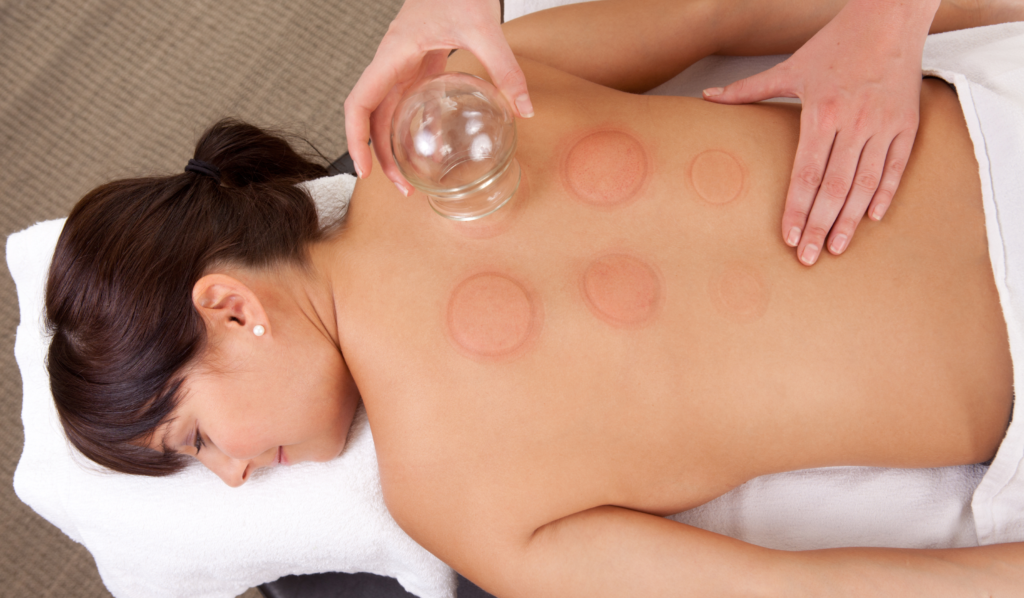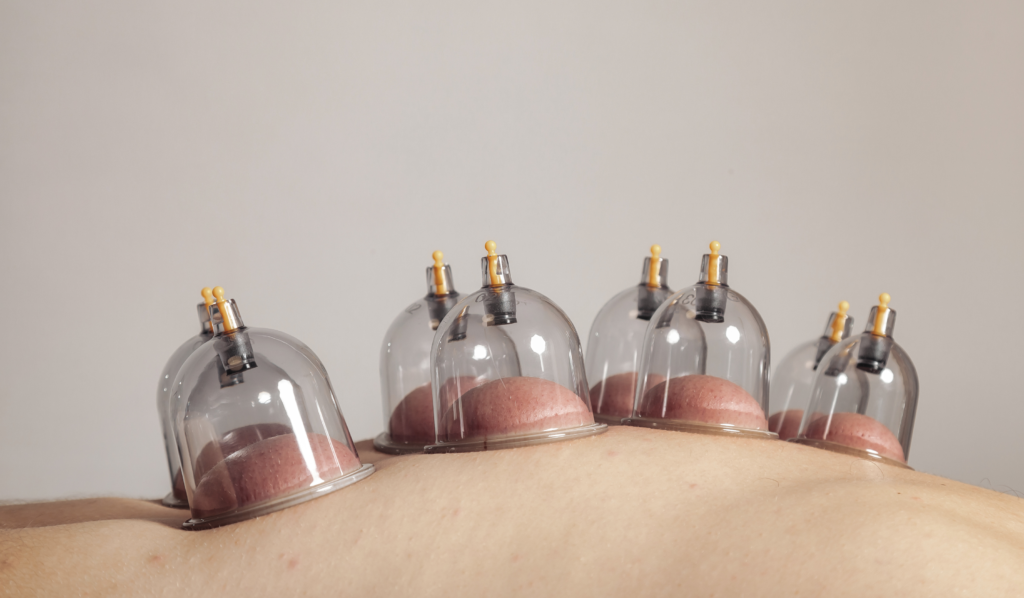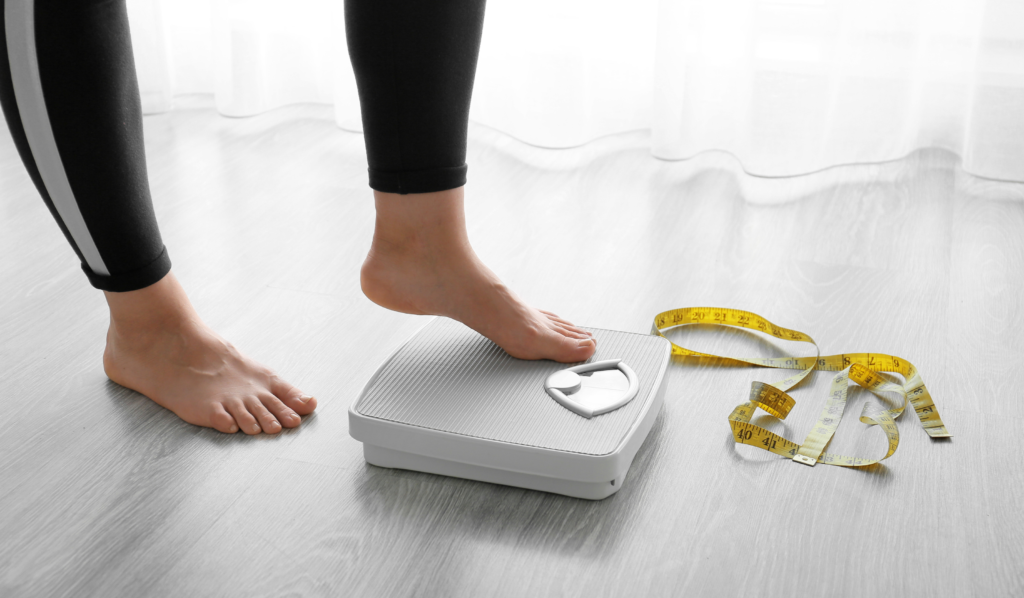Cupping for Weight Loss: Benefits, Process, and What to Expect
In the search for effective and sustainable ways to lose weight, many are turning to holistic practices that work with the body’s natural rhythms. Cupping therapy, an integral part of Traditional Chinese Medicine (TCM), has gained attention for its role in enhancing metabolic function, promoting circulation, and supporting detoxification. While most commonly associated with muscle recovery or stress relief, cupping is also being explored for its potential in body contouring, cellulite reduction, and weight loss support.
The concept is grounded in TCM’s belief that stagnant Qi (energy) and poor blood flow can lead to sluggish metabolism, water retention, and difficulty shedding weight. Cupping therapy applies suction to the skin, drawing blood to the surface and stimulating the lymphatic system. This action may help mobilize toxins, release fatty deposits, and improve tissue health. When combined with proper diet, movement, and overall wellness practices, cupping can be a complementary method for those aiming to enhance their weight loss journey naturally and non-invasively.
Cupping for Weight Loss: Benefits, Process, and What to Expect
In the search for effective and sustainable ways to lose weight, many are turning to holistic practices that work with the body’s natural rhythms. Cupping therapy, an integral part of Traditional Chinese Medicine (TCM), has gained attention for its role in enhancing metabolic function, promoting circulation, and supporting detoxification. While most commonly associated with muscle recovery or stress relief, cupping is also being explored for its potential in body contouring, cellulite reduction, and weight loss support.
The concept is grounded in TCM’s belief that stagnant Qi (energy) and poor blood flow can lead to sluggish metabolism, water retention, and difficulty shedding weight. Cupping therapy applies suction to the skin, drawing blood to the surface and stimulating the lymphatic system. This action may help mobilize toxins, release fatty deposits, and improve tissue health. When combined with proper diet, movement, and overall wellness practices, cupping can be a complementary method for those aiming to enhance their weight loss journey naturally and non-invasively.
How Cupping Works in the Body
Cupping involves placing special cups—typically made of glass, silicone, or bamboo—on the skin to create suction. This suction draws the skin and superficial muscle layer upward, encouraging blood flow and stimulating the body’s natural healing processes. Depending on the technique, cups may be left stationary or moved along the skin in a gliding motion to cover larger areas.
In terms of weight management, cupping increases microcirculation and promotes lymphatic drainage, both of which are essential for reducing swelling, breaking up fat deposits, and flushing out waste. Areas commonly targeted for slimming effects include the abdomen, thighs, flanks, and upper arms. Over time, consistent treatment may improve skin tone and texture, lessen the appearance of cellulite, and relieve fluid retention.
Key Benefits of Cupping for Weight Loss
While cupping is not a direct fat-burning technique, it may support weight loss through a variety of indirect mechanisms. These benefits are enhanced when cupping is part of a larger lifestyle approach that includes movement and nutrition.
Some of the most notable effects include:
- Improved circulation in fat-prone areas, helping break up tissue adhesions and stagnation
- Stimulated lymphatic drainage, assisting in the removal of waste, toxins, and retained fluid
- Enhanced digestion and metabolism by supporting spleen and stomach function in TCM
- Reduced bloating and inflammation, especially in people with poor gut function
- Softer and more elastic skin, which may improve the appearance of cellulite
- Release of fascia tension, allowing for greater mobility and better nutrient absorption in tissues
- Relief from water retention, particularly in the legs, abdomen, and lower back
- Increased body awareness, helping individuals reconnect with physical sensations and identify imbalance
- Encouragement of detox pathways, supporting the liver, kidneys, and skin in eliminating internal buildup
- Support for emotional release, which may help reduce stress-related eating or weight gain triggers
These effects may not result in rapid weight loss, but they do create a more favorable environment for long-term body balance and fat regulation.
What to Expect During a Cupping Session
A typical cupping session begins with a short assessment to determine areas of focus and any physical discomfort or tension. The session usually lasts between 20 to 40 minutes and may include techniques like stationary cupping, sliding (or gliding) cupping, and occasionally fire cupping, depending on the method used.
During the treatment, the suction creates a pulling sensation on the skin, which many describe as tight or warm. This feeling is often followed by a sense of release or lightness in the treated area. Circular marks may develop after the cups are removed; these are not bruises, but rather signs of stagnation and blocked circulation being brought to the surface. They generally fade within a few days.
Many people notice subtle changes after just one session, such as reduced bloating or a sense of ease in their body. However, more noticeable or lasting effects—like improved skin tone, enhanced circulation, or lymphatic support—typically build over multiple sessions.
Dietary Guidance to Maximize Results
To get the most out of cupping for weight loss, it’s important to pair treatments with healthy dietary habits that support circulation and digestion. Traditional Chinese Medicine emphasizes warm, cooked foods, especially those that nourish the spleen and reduce internal dampness.
Helpful dietary tips include:
- Avoid cold and raw foods, especially in the mornings
- Incorporate warming spices like ginger, cinnamon, and turmeric
- Prioritize bitter greens, cooked root vegetables, and legumes
- Limit sugar, dairy, greasy food, and processed snacks
- Drink warm water or herbal teas throughout the day
This dietary approach encourages smoother digestion, balanced energy levels, and a more responsive metabolism—ideal conditions for cupping to work effectively.
Who Should Consider Cupping for Weight Loss?
Cupping may be a supportive tool for individuals who:
- Struggle with water retention, puffiness, or slow metabolism
- Experience bloating, gas, or digestive discomfort
- Feel sluggish despite eating well and exercising
- Want a natural, non-invasive way to support weight loss
- Are seeking complementary therapies alongside fitness and nutrition
It may also benefit those recovering from chronic inflammation, stress-related fatigue, or hormonal imbalances that affect body composition.
However, cupping may not be suitable for people with certain health conditions such as bleeding disorders, severe skin sensitivities, or during pregnancy.
How Often Should You Do Cupping for Weight Loss?
The frequency of cupping sessions depends on your body’s condition and your wellness goals. For general weight support and detoxification, many people start with once a week for 4–6 weeks. From there, maintenance treatments every 2–3 weeks may be recommended.
Results are cumulative. A single session may offer temporary relief or water weight reduction, but long-term changes in metabolism and tissue health often require consistency. Cupping is most effective when paired with mindful eating, movement, and adequate rest.
Common Myths About Cupping and Fat Loss
It’s important to clarify that cupping therapy is not a “fat melting” procedure. It doesn’t burn calories or replace exercise. However, it can influence factors that contribute to stubborn weight, such as fluid retention, fascia tension, and poor circulation.
Some common misconceptions include:
- “Cupping burns fat directly.”
It supports detox and circulation, but doesn’t cause lipolysis or calorie loss. - “The marks mean it’s working.”
The presence or darkness of cupping marks doesn’t equate to effectiveness. Lighter marks can be just as beneficial. - “You can lose weight without changing your lifestyle.”
Cupping is a supportive therapy—it enhances, but doesn’t replace, healthy habits.
Understanding these nuances helps set realistic expectations and leads to better results.
Integrating Cupping into a Holistic Wellness Routine
Cupping works best when included in a broader wellness routine. It pairs well with practices such as acupuncture, herbal medicine, movement therapies, and nutrition strategies that support digestion and metabolic function. In Traditional Chinese Medicine, lasting weight loss is viewed as a reflection of internal harmony—addressing imbalances rather than focusing solely on calorie reduction.
Supporting the body’s natural detoxification, reducing inflammation, and promoting smoother energy flow are all key components of this approach. Cupping enhances these effects by stimulating circulation, easing stagnation, and encouraging the body to return to a state of balance.
When combined with nourishing food, regular movement, and mindful self-care, cupping may contribute to improved energy, better skin health, more efficient digestion, and a lighter, more comfortable body overall.
Safety, Side Effects, and Considerations
Cupping is generally considered safe when used correctly and with awareness of individual health conditions. Like any therapeutic approach, it’s important to understand both the typical responses and potential risks before starting treatment. When used to support weight loss or detoxification, cupping should be approached with care and integrated into a broader wellness routine that includes proper nutrition, hydration, and rest.
Common and Temporary Side Effects
Some mild side effects may occur after a cupping session. These are usually short-lived and part of the body’s healing response:
- Cupping marks: Circular discolorations where the cups were placed are common and typically fade within 3 to 7 days.
- Soreness or tenderness: The treated areas may feel sore or tender to the touch, especially after initial sessions or deeper suction.
- Fatigue or lightheadedness: Temporary tiredness or mild dizziness can occur as circulation increases and toxins begin to process out of the system.
- Itching or sensitivity: As the skin regenerates, the areas may feel slightly itchy or more sensitive.
- Mild swelling: Some individuals experience temporary puffiness in or around the cupped areas, especially with sliding cupping.
- Increased urination: Detoxification effects can sometimes stimulate the kidneys, leading to more frequent urination post-session.
- Heightened emotional sensitivity: As the body relaxes and releases tension, some people report feeling unusually emotional or sensitive for a short time.
- Warmth or localized heat: A warming sensation in the cupped area is common and often indicates increased circulation and energy flow.
These symptoms are not harmful and usually resolve without intervention. Drinking water, resting, and keeping the area warm can help ease post-treatment effects.
When to Avoid Cupping
Cupping is not suitable for everyone. Individuals with certain conditions should avoid or postpone cupping therapy:
- Bleeding disorders such as hemophilia or those taking blood-thinning medication
- Skin infections, wounds, or active rashes in the treatment area
- Pregnancy (especially abdominal or lower back cupping) unless specifically cleared
- Severe varicose veins or extreme skin sensitivity
- Those with serious cardiovascular conditions without medical clearance
A qualified practitioner will always screen for these contraindications before starting treatment. Be sure to disclose all medical conditions, medications, and symptoms during your intake consultation.
Choosing a Qualified Practitioner
To experience the full benefits of cupping, it’s important to work with a licensed Traditional Chinese Medicine (TCM) practitioner or a certified cupping therapist. When performed by a trained professional, cupping is not only safe but also highly effective in supporting detoxification, improving circulation, and aiding weight management. Improper use—especially from untrained hands or DIY kits—can lead to bruising, skin damage, or other unintended effects.
At ACA Acupuncture and Wellness, our practitioners are fully licensed and experienced in providing cupping therapy as part of a holistic care plan. We often combine cupping with other supportive therapies such as moxibustion, reflexology, acupuncture, facial acupuncture, tuina massage, and physical therapy, depending on each individual’s health goals. This integrative approach ensures that the benefits of cupping are enhanced and aligned with your broader wellness journey.
All treatments are performed in a clean, professional setting using high-quality, sterile equipment. While cupping tools are available for home use, we strongly recommend receiving treatment under expert supervision to ensure both safety and effectiveness. Done properly, cupping can be a powerful addition to your routine—supporting your metabolism, easing stagnation, and helping you feel more balanced, energized, and at home in your body.
Sources:
Shmerling, R. H. (2024, July 29). What exactly is cupping? Harvard Health Publishing.
Kang, D., Shin, W.-C., Kim, T., Kim, S., Kim, H., Cho, J.-H., Song, M.-Y., & Chung, W.-S. (2023). Systematic review and meta-analysis of the anti-obesity effect of cupping therapy. Medicine, 102(23), e33918.
Wu, L.-K., Chen, Y.-C., Hung, C.-S., Yen, C.-Y., Chang Chien, C.-Y., Ciou, J.-R., Torng, H.-H., Chang, Y.-C., Hua, S., Lu, P.-N., Liu, Y.-Y., Lai, C.-Y., Kung, Y.-L., Huang, H.-K., Chen, Z.-K., & Ho, T.-J. (2023). The efficacy and safety of cupping as complementary and alternative therapy for metabolic syndrome: A systematic review and meta-analysis. Medicine, 102(13), e33246.
Frequently Asked Questions
Can cupping therapy help with hormonal weight gain, like PCOS or menopause-related fat?
Hormonal imbalances, such as those experienced in PCOS or menopause, can lead to weight gain—particularly around the abdomen, hips, and thighs—due to shifts in estrogen, cortisol, and insulin levels. Cupping therapy may offer indirect support in these cases by improving circulation, easing stress-related stagnation, and promoting detoxification. From a Traditional Chinese Medicine perspective, hormonal weight gain is often linked to liver Qi stagnation, spleen deficiency, and dampness accumulation.
Cupping encourages the movement of Qi and blood, which can help the body process excess fluids and regulate energy flow, potentially reducing the symptoms that make weight management more difficult during hormonal shifts. While not a hormone treatment itself, cupping may support the body’s ability to rebalance naturally when integrated into a consistent wellness routine.
How does sliding cupping compare to stationary cupping for body contouring?
Sliding cupping, also known as moving cupping, involves gliding lubricated cups across the skin—often on the thighs, abdomen, or back. This method is particularly effective for covering larger areas and breaking up fascia adhesions, making it a popular choice for body contouring and cellulite reduction.
It provides a continuous stimulation to the skin and lymphatic system, which may result in smoother skin texture and better fluid drainage. In contrast, stationary cupping involves placing the cups in one spot for several minutes to concentrate the suction in a specific area. While both techniques support circulation and lymph flow, sliding cupping may offer more visible results for toning, shaping, and smoothing, especially when repeated consistently.
Can cupping therapy affect appetite or food cravings?
Cupping therapy may indirectly influence appetite and food cravings by helping to regulate stress, improve digestion, and rebalance internal energy flow. Many people experience intense cravings due to emotional triggers, blood sugar fluctuations, or digestive sluggishness.
Cupping, especially on the back and abdomen, can calm the nervous system, support liver and stomach function, and reduce bloating or fullness that often leads to erratic eating habits. When the digestive system becomes more efficient, the body is better able to signal true hunger and satiety. Over time, this may result in a more balanced relationship with food and reduced dependence on emotional or habitual eating.
Are there specific meridian points targeted during weight loss cupping?
In Traditional Chinese Medicine, specific meridians are believed to influence metabolism, digestion, and fluid regulation. During weight loss-focused cupping, areas associated with the stomach, spleen, large intestine, and bladder meridians are often stimulated. The abdominal region, for instance, is connected to the stomach and spleen meridians, which are central to nutrient absorption and transformation.
The lower back and flanks may be targeted to support the kidney and bladder meridians, which are linked to water metabolism and energy reserves. By stimulating these channels, cupping can help address internal imbalances that contribute to sluggish digestion, damp accumulation, or difficulty losing weight—especially when these meridians show signs of stagnation or blockages.
Is cupping helpful for post-partum weight loss and body recovery?
Post-partum recovery involves significant hormonal shifts, fluid retention, and physical fatigue—all of which can make weight loss and body healing feel more challenging. Cupping may support this transition by improving circulation, promoting lymphatic drainage, and encouraging the body to release retained fluids and waste. It can also help relieve muscle tension, back discomfort, and digestive sluggishness that many experience after childbirth.
Cupping on the abdomen and lower back may assist in restoring energy flow and reactivating core circulation. While gentle techniques are recommended during this time, cupping may offer a supportive and non-invasive option for those easing back into wellness after pregnancy.
What’s the best season or time of year to start cupping therapy for metabolic support?
According to Traditional Chinese Medicine principles, spring and early autumn are particularly supportive seasons to begin cupping therapy for metabolism and detoxification. Spring is associated with liver energy and renewal, making it an ideal time to clear stagnation and awaken digestive function.
Autumn, on the other hand, is linked to lung and large intestine health—both of which are important in the elimination of waste and managing dampness. That said, cupping can be beneficial year-round if paired with seasonal dietary habits and mindful self-care. Starting during a transitional season can enhance the body’s ability to reset and align with natural rhythms, making cupping more effective as part of a long-term wellness plan.
Contact ACA Acupuncture & Wellness
Get in Touch
Newsletter Sign Up
LOCATIONS
MANHATTAN
QUEENS
NEW JERSEY
CALIFORNIA

ACA Franchise Opportunities
The over $4 billion US acupuncture market offers a great opportunity with over 10% annual growth rates and a continuing flow of new patients interested in the benefits of acupuncture.







